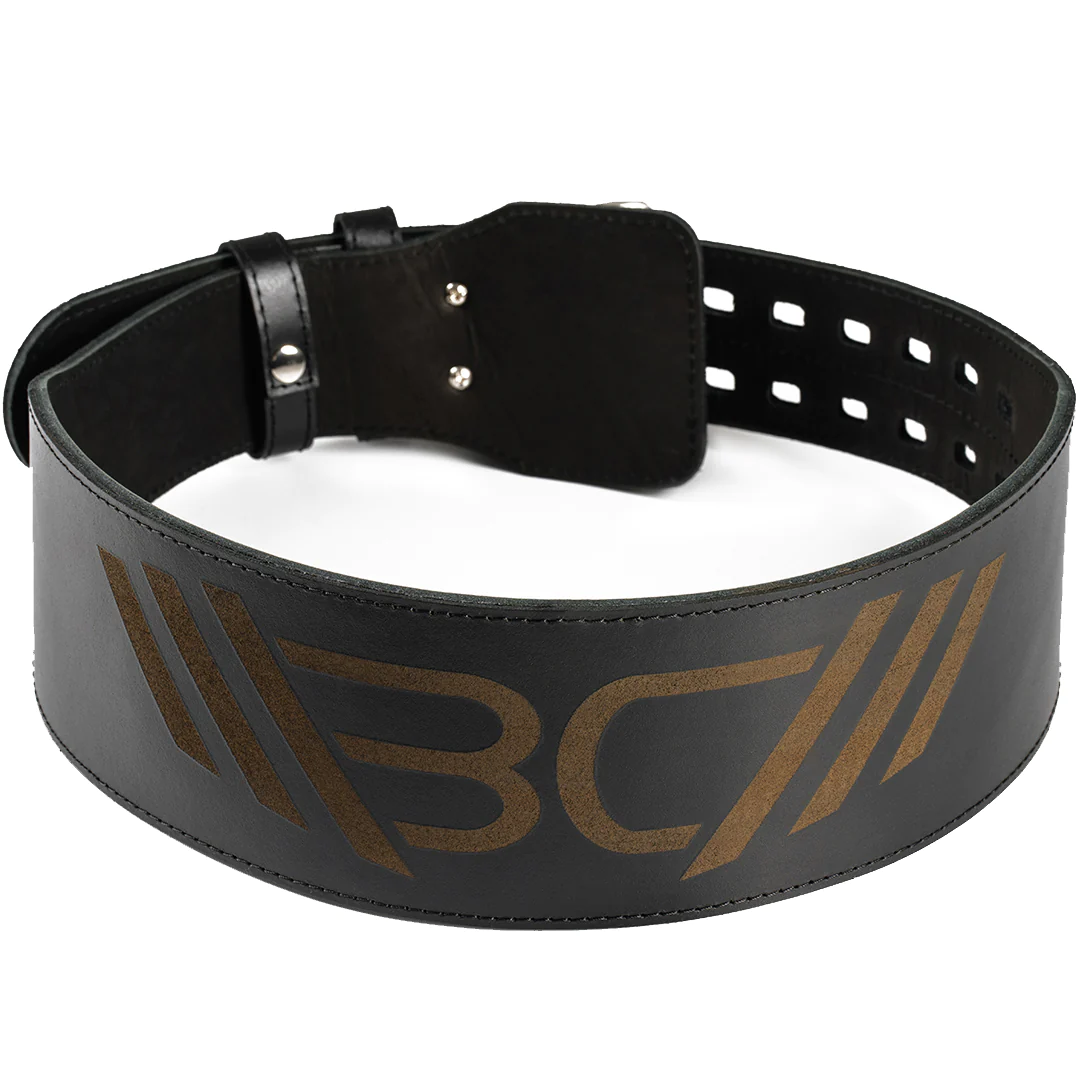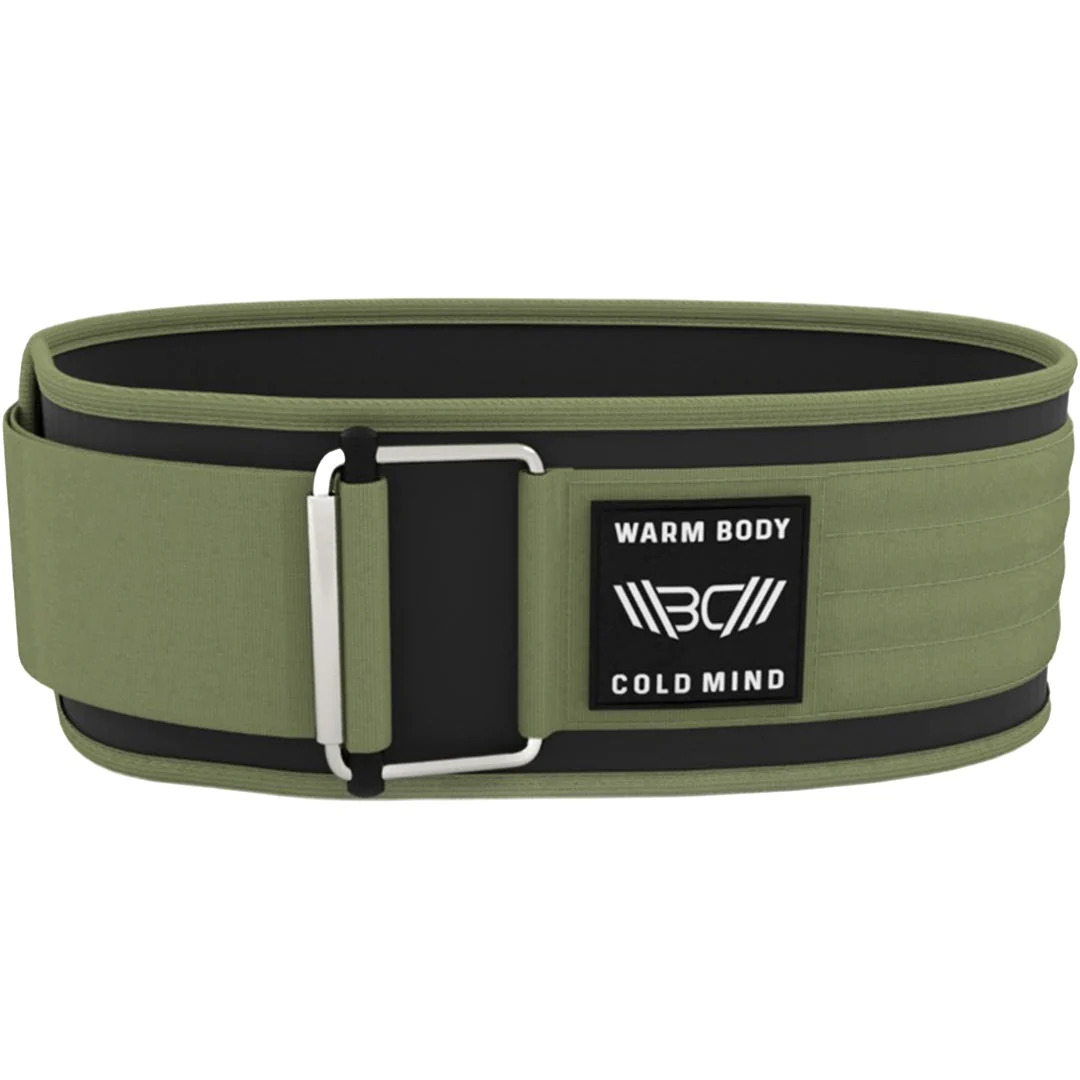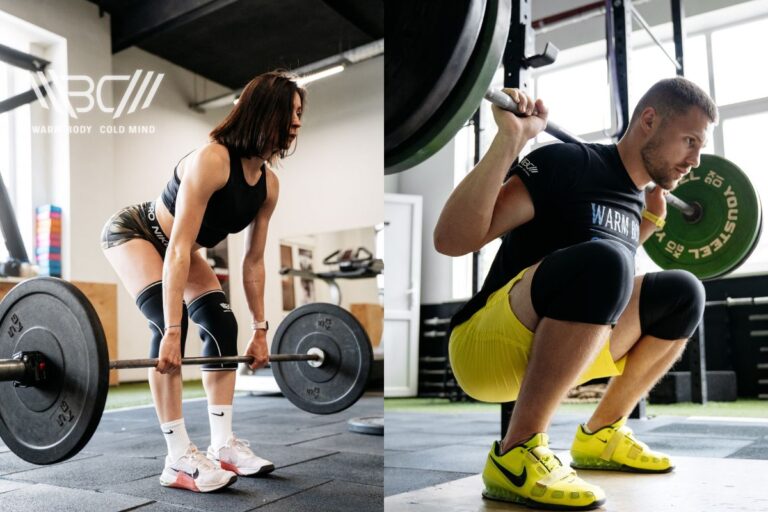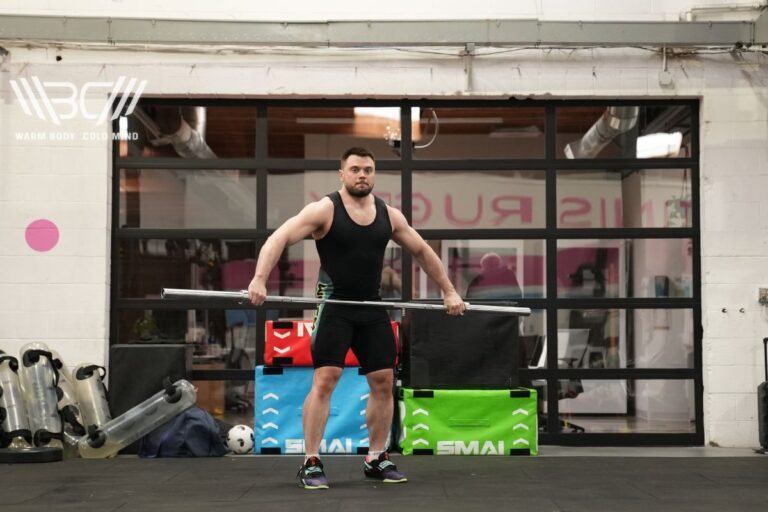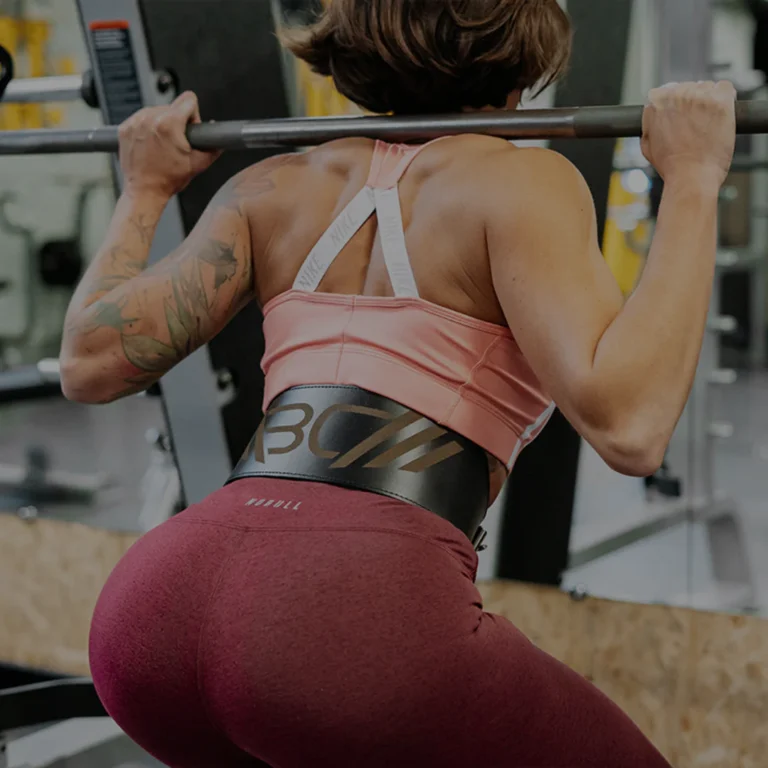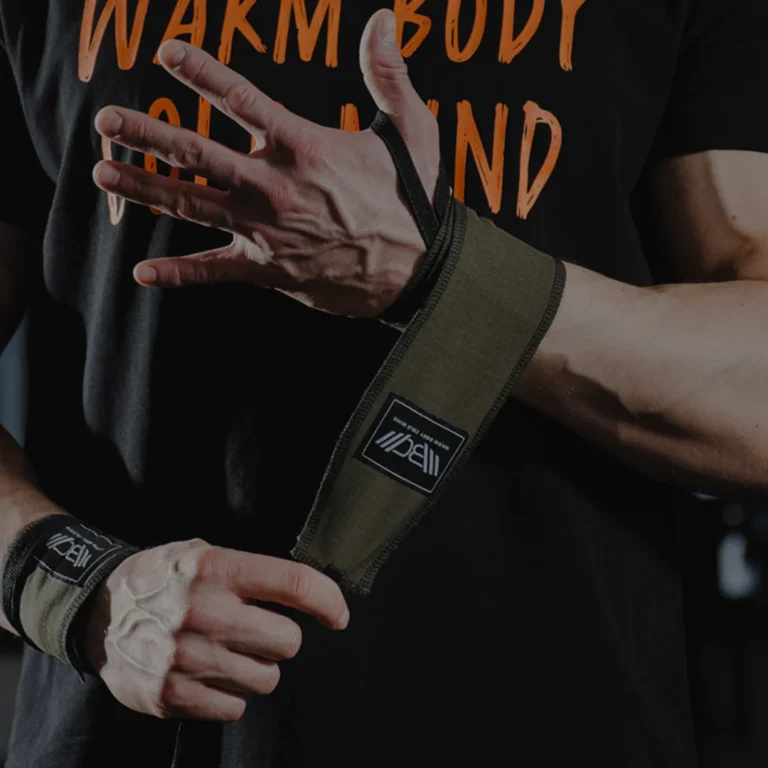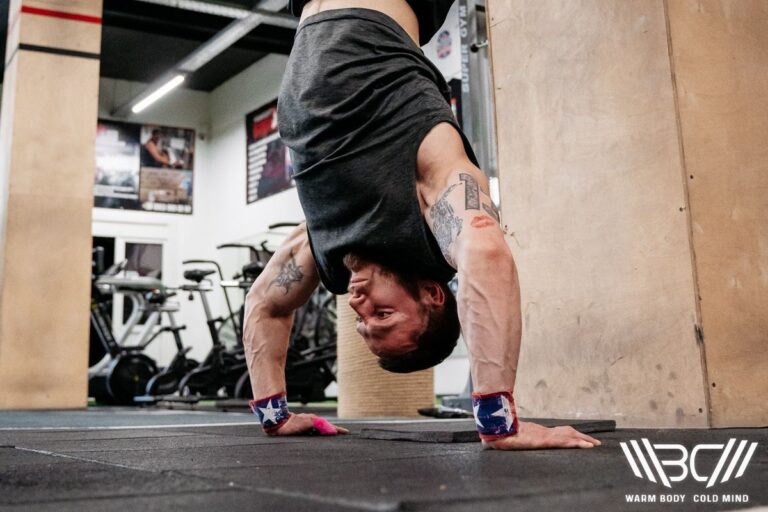How to Breathe During Squats? 5 Steps Explained
Squats make a comprehensive fitness test for the human body. Coordinating multiple joint movements requires a fair amount of strength and stability. During bodyweight squats, you can stretch your arms out in front to balance the backward drive of hips.
Barbell squats, on the contrary, place a greater demand while dismissing this shortcut.Here, you must understand how to breathe during squats. Following a perfect breathing pattern – which we call a ‘2B Technique’ – increases core and spinal stability, which is crucial to heavier and safer powerlifting.
How to breathe during squats? – A correct breathing technique for squats is key to improving your numbers and safety. First, take a large diaphragmatic breath. Secondly, tighten all your core muscles without losing air pressure. Hold it for the entire rep, and readjust at the top.
Proper Breathing During Squats: Why Is It Important?
Before diving into the nitty-gritty of the process, let’s look at the significance of proper breathing for squats.
You might have heard the general guideline of “exhaling on exertion.” Accordingly, you’re advised to inhale while sitting into a squat and exhale on the way up. These straightforward breathing mechanics can serve you in high-volume—low-load regimes, not maximal attempts.
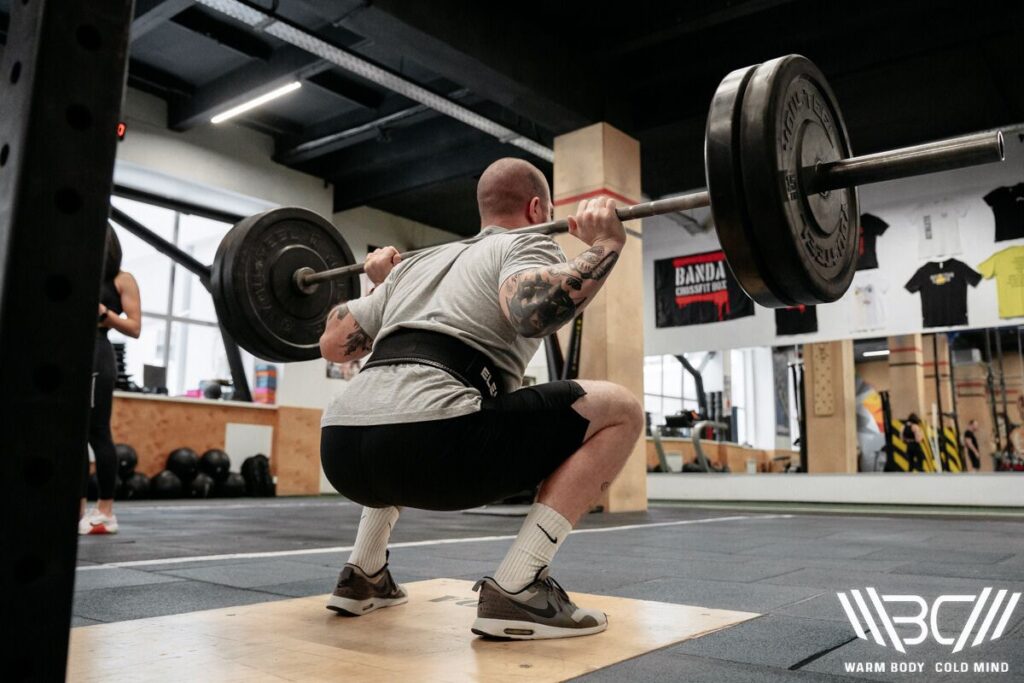
The breathing is synchronized with the bracing of core muscles, and hence dubbed as a ‘2B’ technique. Abdominal cavities are expanded and immediately stiffened into a rigid 360-degree cylinder to generate a high internal pressure, known as intra-abdominal pressure (IAP).
A plethora of muscles provide structural support and stability to the spine, which, in itself, is just a stack of bones. A rigid trunk allows a seamless force transfer from ground and lower-body musculature up to the barbell.
Should you abruptly exhale while getting out of the hole, trunk rigidity dilutes, depositing a greater load on the thoracic and lumbar spine and, thus, increasing the risk of compression fractures, disc herniation, and other injuries.

Pro Tip:
Remember, strength and stability aren’t the same thing. Muscular strength is about producing force. Stability, on the other hand, is the ability to resist movement. Although exercises like crunches and twisters are beneficial, they can’t replace the need to consciously stabilize core muscles with proper breathing while your knee and hip extensors function.
1. How Does the Breathing Process Take Place During Squats?
You’ve been breathing since forever, so what’s new!
In the context of an ideal breathing technique for squats, you must learn about diaphragmatic breathing. Diaphragm, a dome-shaped flat muscle at the base of lungs, contracts and relaxes as you breathe in and out.
Since you’ll be doing an entire rep without exhalation, filling up a large and deep breath is essential for optimal oxygen exchange. You’ll notice an all-around expansion in your belly. It’s time to undergo the second B, to brace. Bracing involves stiffening, not sucking in, of your guts as if a Mike Tyson punch is coming your way.
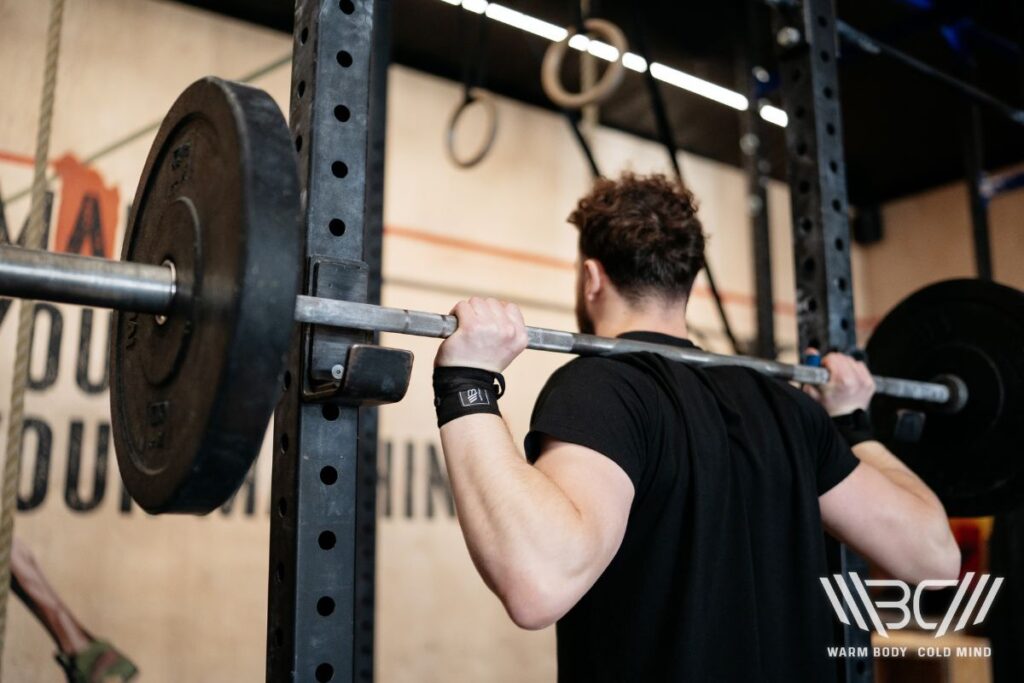
Keep in mind, the process must be followed in order. Without a lot of air pressure, you can’t create enough tension to stabilize the spine. On the other hand, you end up breathing shallow and short with an already tense core.
Then, comes the holding part, also known as Valsalva Maneuver. You’ll see competitive powerlifters forcefully shutting their mouths and sometimes grunting during the upward (concentric) phase. Not letting out all the air at once maintains IAP necessary to hoist bulky loads.
This maneuver spikes blood pressure, nonetheless. But you’ll do so for a few seconds. Most people have nothing to worry; those with a compromised cardiovascular system should consult a doctor.
[See Ray Williams doing a record-breaking Raw Squat of 1080 lbs in USAPL. Pay close attention to how he takes and holds his breath.]
2. How to Determine if You’re Breathing Correctly During Squats?
The breathing pattern is honed over time. You should practice it from the day one of doing barbell squats, whether front or back, at over 50% of your 1RM. The general guideline on when to inhale and exhale during squats suffice for submaximal efforts.
A good cue is to master the 2B technique without equipment. Place your one hand on your belly and another on the side below ribs. Standing upright, take a diaphragmatic breath. You should feel an all-around core expansion. Now try to brace without reversing this augmentation in size. Hold for a few seconds.
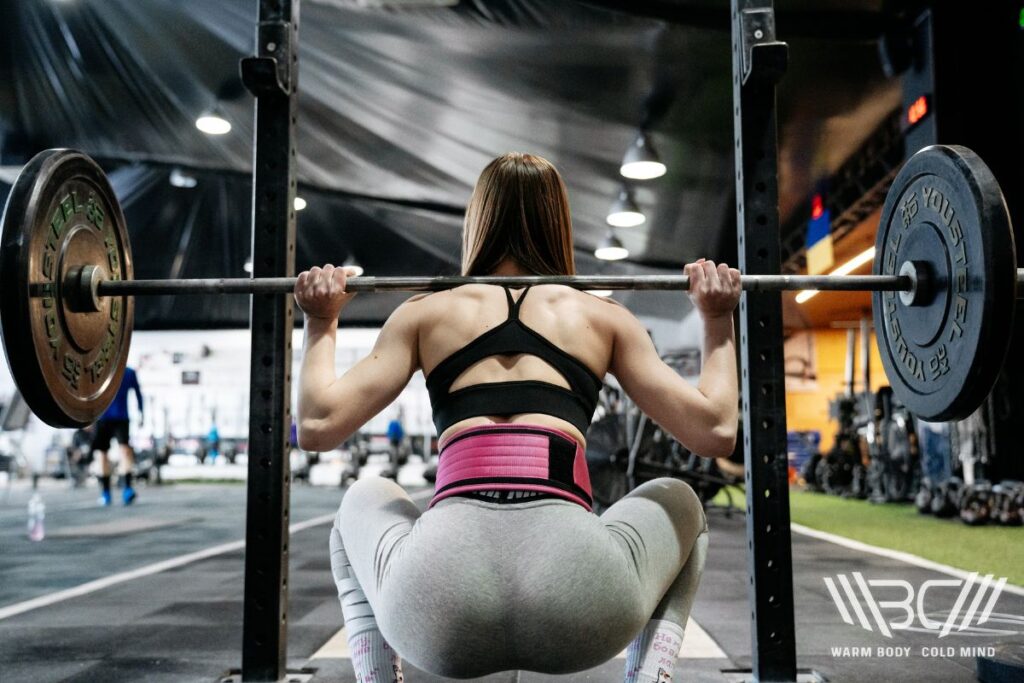
You can also practice this by wrapping a band or belt around your belly with a little room. Do bodyweight squats with a braced core. Once you’re accustomed to the pattern, bring the barbell into the action.
By incorporating this technique into the form, weights feel lighter due to the increased spinal stabilization. You can better push your prime movers (viz., quads and glutes) to failure and unlock the next level.
How to Breathe Correctly During Squats: A Step-By-Step Guide
Now, you understand the importance and pattern of breathing while squatting, but may be overwhelmed by the host of information. We’ll take a sample training max to review this process.
1. Setup
You’ve approached the squat stand with a loaded barbell racked below your shoulder height. A weight-belt greatly supplements IAP, as long as the proper breathing pattern is observed. Feel free to strap up at loads over 80% of your 1RM. Hold the bar with your preferred grip width, duck under it, execute double B technique, and stand tall.
Warm Body Cold Mind, an expert-vetted lifting accessory brand, offers its admirable and affordable weight belts across a vast range of sizes and styles. WBCM Leather Weightlifting Belt is a 6mm-thick specimen with a double-prong closure for maximum IAP increments.

Enhance your strength training with Warm Body Cold Mind leather weightlifting belt providing exceptional support and durability.
This 4” Nylon Weightlifting Belt is a much more versatile option, managing a moderate core support (personally tested with up to 300-lb squats) against unrestricted mobility you need for snatches and cleans. The choice is yours!

Discover the strength of the Warm Body Cold Mind nylon lifting belt. Lightweight and durable, it provides optimal support for your workouts.
2. Retreat
Whether you’ll perform a walkout or complete squat, take a couple steps back to avoid hitting the rack. Once the bar is stabilized on delts, you can release the pre-squat breath. Remember diaphragmatic breathing? Don’t breathe in your chest but your stomach. Otherwise, besides a bouncy barbell, you won’t be able to brew adequate tension.
3. Exercise
You know the squat form 101: a neutral spine, straight or upward gaze, knees over toes, heels on ground, and bam! Mix the Valsalva Maneuver (breath-holding) with all this. Once the target depth is broken, at least a 90-degree bent of the knee joint, rise back up. Control the pace of the movement and breath as well.
4. Exhale
During the ascension, you’ll be naturally inclined to spurt your breath out. Keep your lips tightly pursed. Some air can pass your larynx to accumulate inside the mouth, causing a ‘grrr’ or ‘tsss’ sound. The aim is to hold until at the top of the rep. There, you can refill (let go of the air in your mouth with a small opening and inhale the same) without losing tension.

Pro Tip:
A lot of athletes do two to three reps with a single breath, but it can induce lightheadedness and dizziness. When squatting a new max or to failure, get hold of an experienced spotter. He/she won’t only help you bail but also provide tactical feedback on your technique. Simultaneously, have the spotter arms and safety pins ready.
5. Modulate
The amount of breath and brace should be tuned according to the effort. If you’re doing a one-rep max, have maximal tension. Use a lifting belt, too. As the rep range moves away from one and the load, with its demand of core stability, decreases – simply reduce the amount of breath you fill and tension you create. Maintaining that level would be easier rep after rep.
Subscribe!
The latest reviews of must-have home gym training equipment, apparel, and supplements that will enhance your performance and bring you new results.
2 Main Exercises to Improve Your Breathing during Squats
We admit that the 2B breathing technique for squats can be a little complicated during initial trials. Here are two exercises that will help you properly breathe and brace.
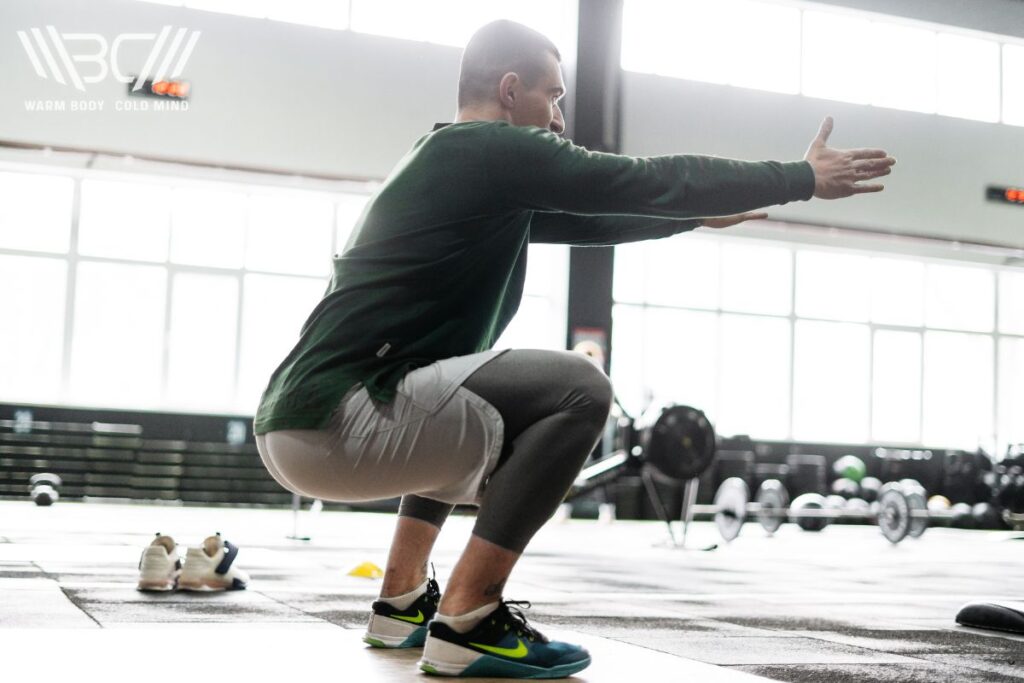
1. Diaphragmatic Breathing
Practicing diaphragmatic breathing provides you with consciousness and control of your diaphragm. It fights off stress, shortness of breath, low oxygen levels, and strain on the upper chest and neck region.
Duration: 3-5 minutes
- You can do this exercise with a clear mind and closed eyes while standing, sitting in a chair, or laying on your back.
- Put one hand on your chest and another just below the ribcage, so you can feel your belly moving outward like a balloon.
- Breathe through your nose down to stomach for a count to two, and continuously exhale through pursed/puckered lips for a count to four. The hand on your chest should remain as still as possible.
2. Bird-Dog Pose
The bird-dog pose, also less whimsically identified as quadruped opposite arm/leg extension, can enhance your core strength and stability. It’s key to preventing energy leakages in squats.
Duration: 10 reps on each side
- Kneel on all fours with your hands, knees, and feet hip-width apart. An exercise mat will be helpful.
- Put your spine into a neutral position with no arching or hyperextension. Engage core and gluteal muscles at the same time.
- Slowly raise your left leg and right hand until they’re parallel to the floor. Wait for about 10 seconds, and lower them back to the tabletop position. Now, lift the opposite pair of your limbs in the same manner. Your pelvis shouldn’t rotate outward during the movement.
FAQ
Should You Breathe Through Your Nose or Mouth When Squatting?
Nasal breathing is indispensable for a large and deep belly breath. You can exhale and recapture the lost air through pursed lips at the top of each rep. If you’re completely out of breath, calling on your nose is warranted once again.
Do You Exhale During Squats?
General guidelines suggest one breath per each rep, meaning inhaling on the way down and exhaling while coming up. During maximal attempts, deflating and easing your belly before lockout-related sticking points is risky. Valsalva Maneuver is highly recommended.
How Do You Breathe for High-Rep Squats?
The IAP requirement is proportional to the load you’re lifting. Hence, during high-rep—low-load squats, you won’t need to practice 2B technique as intensively as during maximal training. Try to inhale and exhale in a rhythm, securing sufficient air and tension for your stomach prior to each rep.
Conclusion
How to breathe when squatting? In short, you have to maintain a rigid and stabilized trunk for increased force transfer, prime movers’ engagement, and spinal safety. To this end, the 2B (short for breathing and bracing) technique comes in handy. We’ve explained all the dos and don’ts of proper breathing for squats in this article. You shouldn’t mistake it for medical advice, however!
Do a breathing drill right now, and tell us whether you’re a chest or stomach breather. Also, what’s your current squat PR with and without the belt? Do you think it’s multipliable with better breath control?
We’re waiting for your feedback in the comment section.
References:
- Brad J. Schoenfeld, “Squatting Kinematics and Kinetics and Their Application to Exercise Performance,” Journal of Strength and Conditioning Research 24, no. 12 (2010):3497-506.
- Hackett Daniel A., Chow Chin-Moi, “The Valsalva Maneuver: Its Effect on Intra-abdominal Pressure and Safety Issues During Resistance Exercise,” Journal of Strength and Conditioning Research 27, no. 8 (2013):2338-45.
- Harvard Health Publishing, “Learning Diaphragmatic Breathing,” Harvard Medical School, https://www.health.harvard.edu/healthbeat/learning-diaphragmatic-breathing (accessed March 06, 2024).
- Manohar M. Panjabi, “Clinical Spinal Instability and Low Back Pain,” Journal of Electromyography and Kinesiology 13, no. 4 (2003):371-9.
- S. M. McGill, R. W. Norman, M. T. Sharratt, “The Effect of an Abdominal Belt on Trunk Muscle Activity and Intra-abdominal Pressure during Squat Lifts,” Ergonomics 33, no. 2 (1990):147-60.
- All photos are made by WBCM Media team.
Author: Sergii Putsov
PhD in Sport Science, Olympic weightlifting, Strength & Conditioning coach and fitness expert
Sergii Putsov is a professional weightlifter with over 20 years of experience and multiple national medals. He was a member of the National weightlifting team, competing in the 94 kg weight class. Sergii holds a master’s degree in Olympic & Professional Sport Training and a Ph.D. in Sport Science. After his athletic career, Sergii transitioned into coaching and is now responsible for designing training programs, writing blog articles, providing live commentary for international weightlifting competitions, and hosting sport and fitness seminars worldwide.


